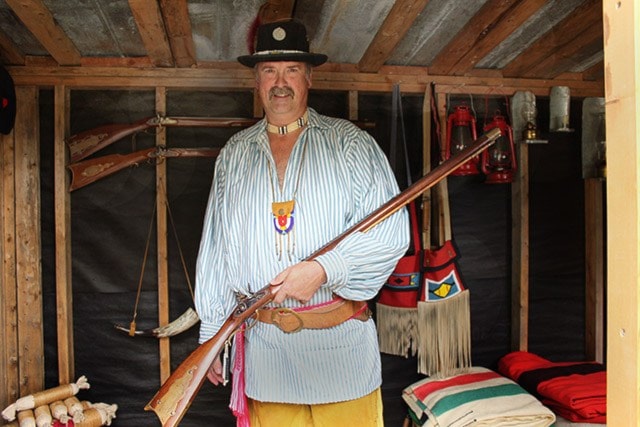A five day hike from Tulameen to Hope may not be a dream for everybody, but for Rick Herfst, it's a major item on his bucket list.
Herfst has participated as a historical re-enactor in the Fort Langley Brigade Days Weekend for seven years, and his area of historical expertise is the Hudson's Bay Company (HBC) Brigade Trail.
The trail was the primary route of transportation for the fur traders, who would pack and haul the year's intake of furs, by horseback and canoe, from interior and northern trading posts all the way to Fort Langley, which then would be shipped to England.
Herfst has long been interested in the history of where he actually lived. "There's this idea that, perhaps, Canadian history is dull," Herfst explains, "so I started to investigate." Throughout years of collecting a library of books and journals, Herfst realized that "the [northwest] fur trade has had a huge impact on us as a country."
The annual Brigade Days event takes place in Fort Langley, the actual place where Governor Douglas proclaimed the Crown colony of British Columbia in 1858. Throughout the weekend, volunteer re-enactors don period (pioneer) attire, set-up camp, and reenact life in the 1800s, showing off all kinds of traditional skills.
Herfst first began volunteering at Brigade Days on a Chilliwack couple's recommendation. After his first time reenacting, Herfst couldn't wait to get back the next year, but he had a lot of collecting and skill-building to keep him busy in the meantime.
 On his property, Herfst has built his own trading post, filled with a collection of replicas and collectibles to represent the belongings of pioneers. "I get enjoyment out of learning the skills that [pioneers] had," he says as he points out the shooters bags, fur bales and wooden chests that he's created.
On his property, Herfst has built his own trading post, filled with a collection of replicas and collectibles to represent the belongings of pioneers. "I get enjoyment out of learning the skills that [pioneers] had," he says as he points out the shooters bags, fur bales and wooden chests that he's created.
Even basic survival skills like lighting a fire with one spark, drying meat, or cooking on a fire, "those things are unique, and a dying form."
It's been an educational journey for Herfst, and he strives to share this knowledge with the public during Brigade Days. "I think there's a lack of historical knowledge out there," Herfst says, and he wants to educate the locals about where we, as a province, came from.
"I think we can do a better job [at teaching history] and that we can make it more interesting." Rather than looking at grainy pictures and dates in a textbook, re-enactors bring history to life. Particularly for young people, Herfst notes, it's important to engage them through live demonstrations, let them create something, and inspire them to ask "why."
Recently, Hope Mountain Centre for Outdoor Learning has rediscovered and reopened the Brigade Trail for public use. Looking forward, Herfst will not only be continuing to participate in Brigade Days, but he also hopes to serve as an educational trail guide, preserving the memory of the important exploration and adventure that took place on the Brigade Trail so many years ago.
See Rick Herfst and many more re-enactors in action at the annual Brigade Days at Fort Langley National Historic Site August 1-3.

